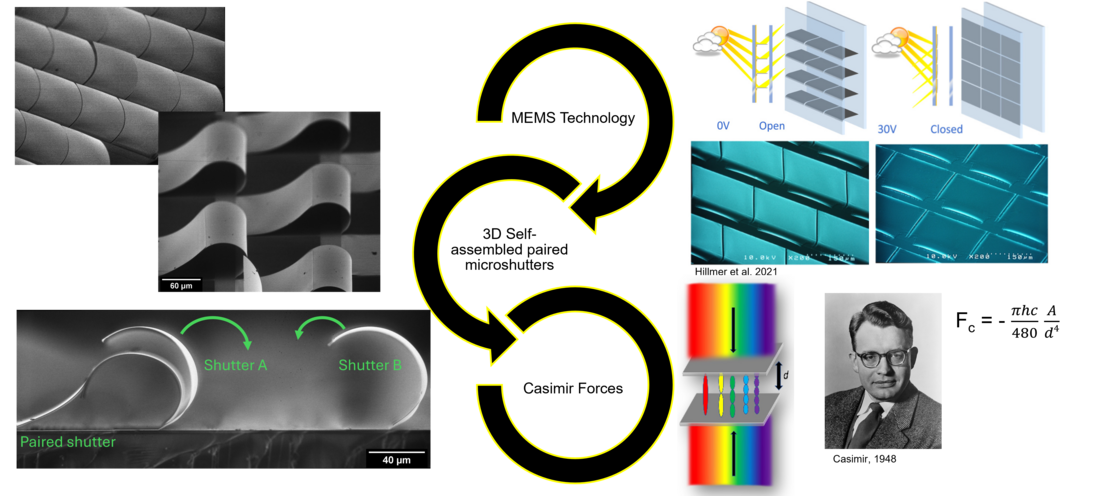Casimir Effect, MEMS and 3D self-assembly
As the world of technology continues to shrink into the nanoscale, quantum phenomena like the Casimir effect—once considered purely theoretical—are becoming essential forces in the design and operation of Microelectromechanical Systems (MEMS). MEMS devices, which integrate mechanical elements with electronics on a microscopic scale, are revolutionizing industries from biomedical devices to robotics and telecommunications. However, as these systems become smaller and more precise, the quantum fluctuations that generate the Casimir effect begin to play a significant role.
The Casimir effect, which arises from vacuum fluctuations between closely spaced objects, creates an attractive force that can influence the performance of MEMS components. This force can cause stiction—unintended adhesion of parts—or, conversely, be engineered to facilitate self-assembly in complex nanostructures. Understanding and manipulating these forces offers new possibilities in 3D self-assembly, enabling the creation of intricate, nanoscale architectures that could redefine the future of nano- and microfabrication such as Paired microshutters-Yin-Yang structures- that are developed and studied here at INA .

By integrating insights from quantum mechanics with cutting-edge MEMS technology, we are pioneering research into how the Casimir effect can be harnessed to overcome challenges in micro-scale engineering and push the boundaries of what is possible in micro- and nanotechnology
Publications
B. Elsaka, P. Kästner, Y. Hamarneh, E. Käkel, R. Donatiello and H. Hillmer, "Casimir Forces leading to 3D self-assembled paired metallic microshutters," 2024 International Conference on Optical MEMS and Nanophotonics (OMN), San Sebastian, Spain, 2024, pp. 1-2. doi.org/10.1109/OMN61224.2024.10685251
Elsaka, B.; Yang, X.; Kästner, P.; Dingel, K.; Sick, B.; Lehmann, P.; Buhmann, S.Y.; Hillmer, H. Casimir Effect in MEMS: Materials, Geometries, and Metrologies—A Review. Materials 2024, 17, 3393. doi.org/10.3390/ma17143393
Elsaka, B.; Kästner, P.; Käkel, E.; Donatiello, R.; Hillmer, H. Investigation of the Influence of Sublayer Thickness on Pairing of Metallic MEMS Shutter Blades. Appl. Sci. 2023, 13, 1538. doi.org/10.3390/app13031538
Kästner, P.; Käkel, E.; Akhundzada, S.; Donatiello, R.; Hillmer, H. Development of self-assembled 3D MEMS Paired Shutter Arrays for studies on Casimir forces. In Proceedings of the Technical Digest MOC, Jena, Germany, 25–28 September 2022; Volime 1054, pp. 74–75.
Akhundzada, S.; Yang, X.; Fiedler, J.; Käkel, E.; Al-Qargholi, B.; Buhmann, S.; Ehresmann, A.; Hillmer, H. A novel approach to construct self-assembled 3D MEMS arrays. Microsyst. Technol. 2022, 28, 2139–2148. doi.org/10.1007/s00542-022-05361-1
